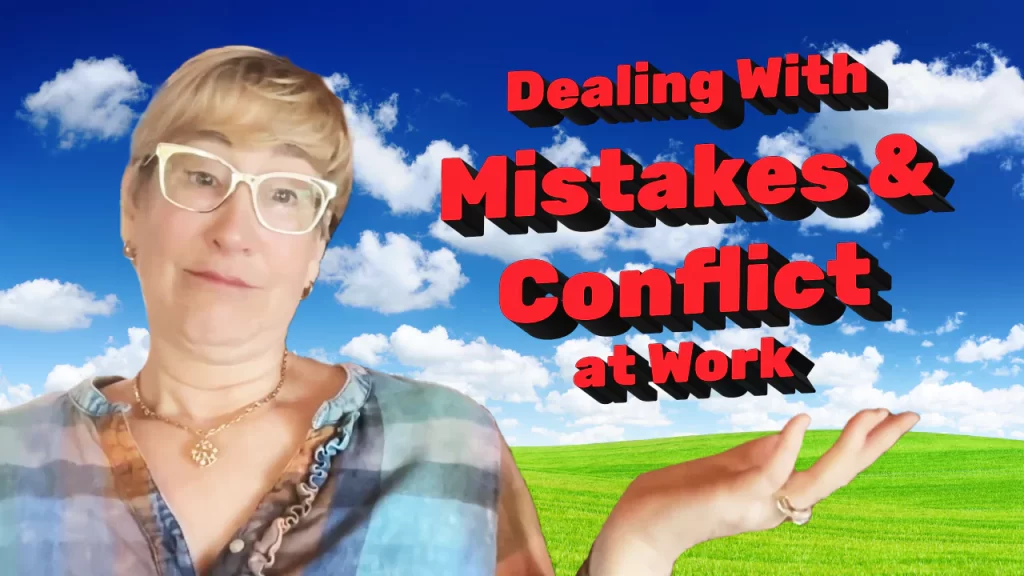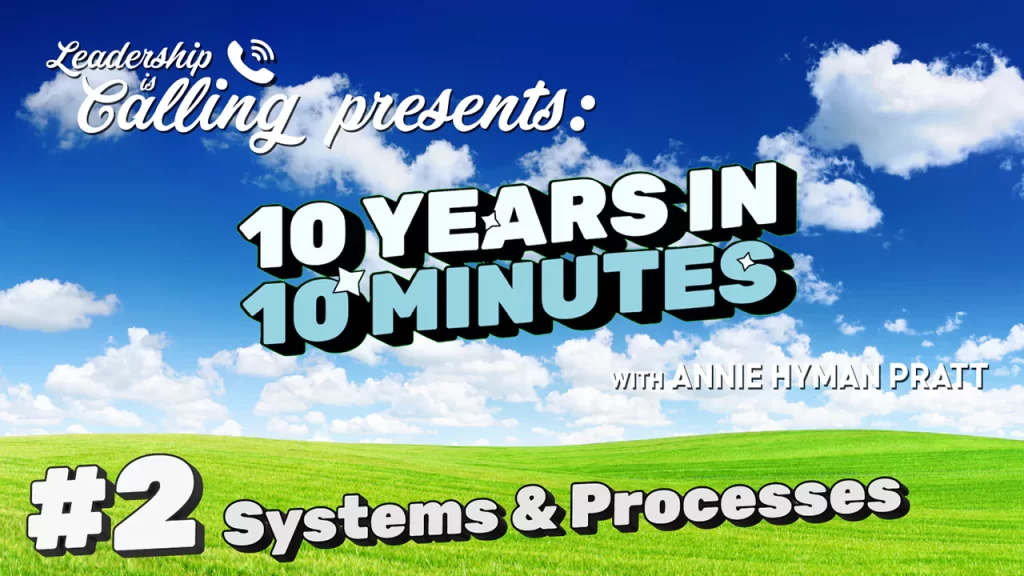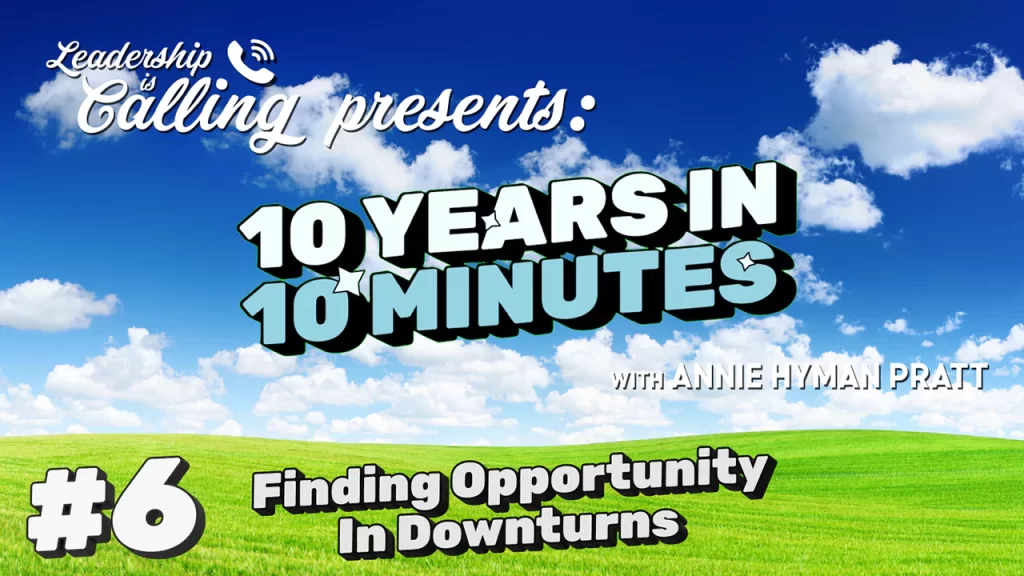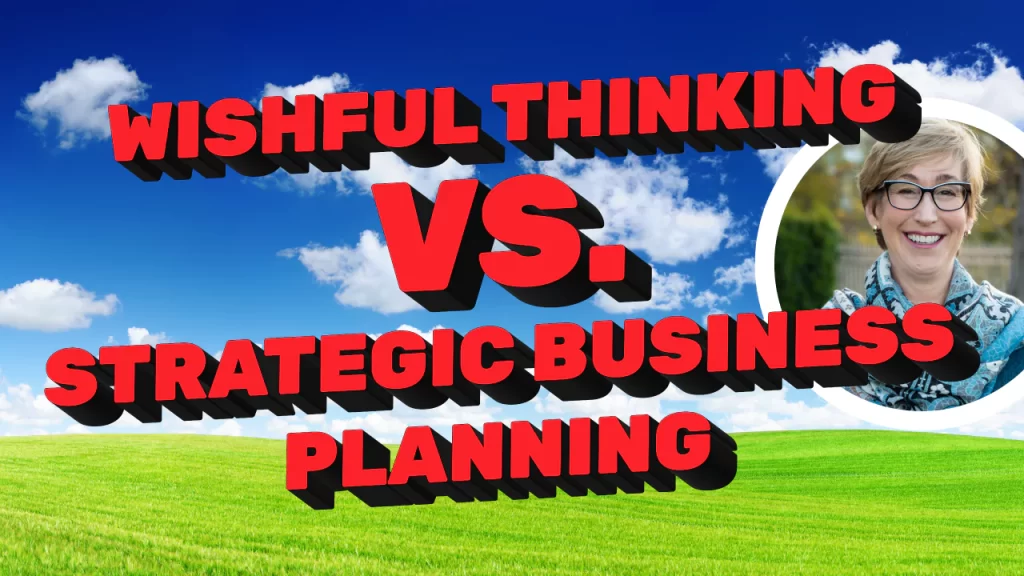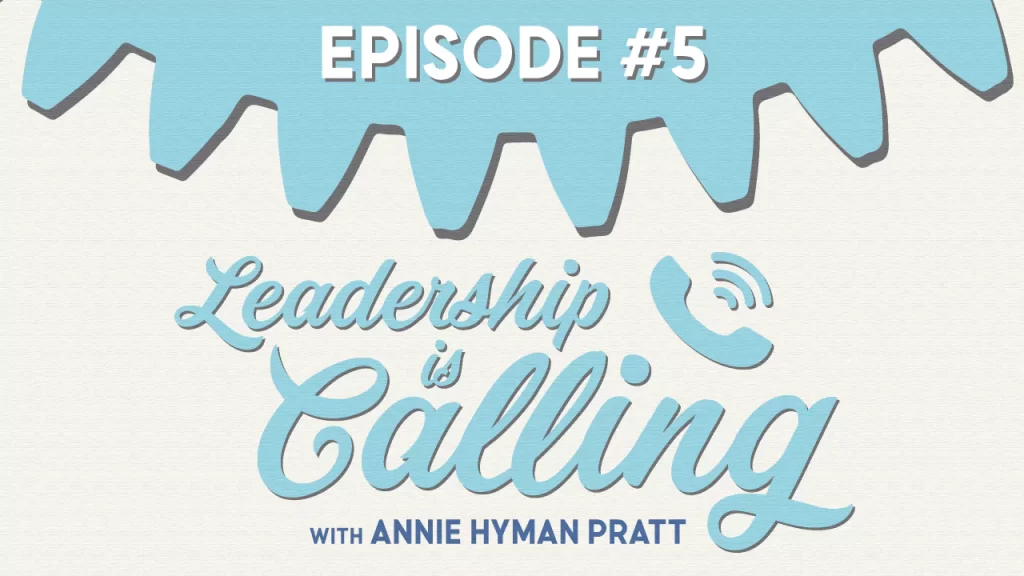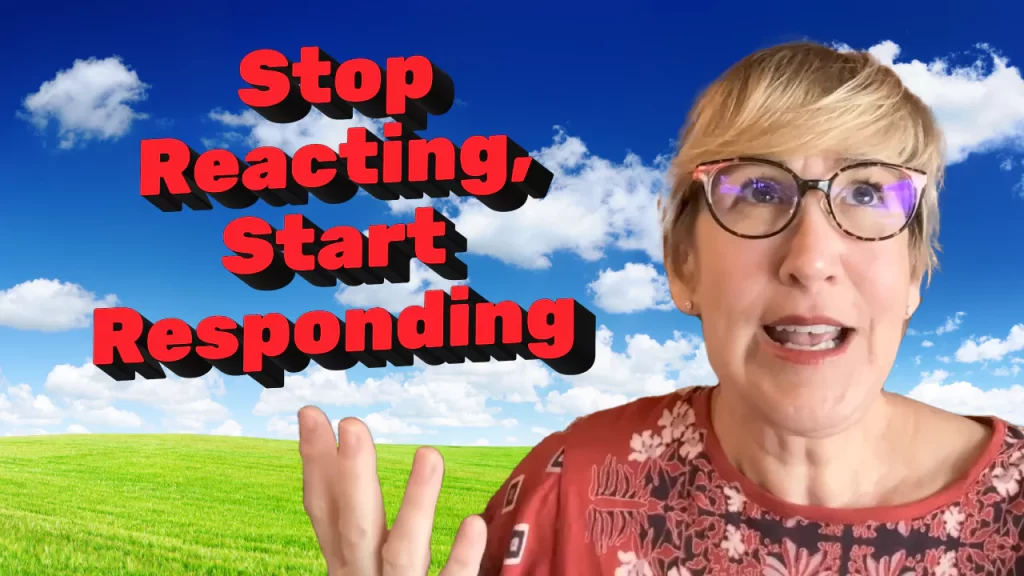Episode #32: Avoid the Visionary-Integrator Trap: Build a Cross-Functional Leadership Team Instead
Leadership is Calling Episode #32
Annie Hyman Pratt
- Description
- Transcript
Avoid the Visionary-Integrator Trap: Build a Cross-Functional Leadership Team Instead
“It’s so much better to be building leadership over time as you grow, to keep identifying needs, to bring people within the functions who can keep moving up.” -Annie
If you’re an entrepreneur, you know that the key to success is having a strong vision for your business. But what about the day-to-day execution? That’s where the visionary/integrator model comes in.
This model is based on the idea that there are two essential roles in a business: the visionary and the integrator. The visionary is the person who has the vision for the business and sets the direction. The integrator is the person who makes sure that the vision is executed and that the business is running smoothly.
While the visionary/integrator model can be effective for some businesses, it’s not right for everyone. In this video, Annie discusses why the visionary/integrator model doesn’t work for entrepreneurial businesses, what you should do instead. Leading Edge Teams advocates for a model where entrepreneurial businesses that are moving from startups to sustainable businesses, empowers the CEO to get out of the weeds and actually do that visionary work. What they must have is a really strong cross-functional leadership team.
Key Points
- The visionary/integrator model is based on the idea that there are two essential roles in a business: the visionary and the integrator. The visionary is the person who has the vision for the business and sets the direction. The integrator is the person who makes sure that the vision is executed and that the business is running smoothly.
- While the visionary/integrator model can be effective for some businesses, it’s not right for entrepreneurial businesses. In entrepreneurial businesses, the CEO needs to be more focused on the vision and strategy, and less focused on the day-to-day execution.
- There are a few reasons why the visionary/integrator model doesn’t work for entrepreneurial businesses:
- It’s impossible for one person to be an expert in all of the different functions of a business.
- The integrator role is often too demanding and can lead to burnout.
- The integrator role can create a bottleneck in the business, as all information and decisions have to go through them.
- A better approach for entrepreneurial businesses is to build a strong cross-functional leadership team. This team should be responsible for the day-to-day execution of the business, and the CEO should be responsible for the vision and strategy.
- Building a strong cross-functional leadership team takes time and effort, but it’s worth it in the long run. It will allow the CEO to focus on their strengths and lead the business to success.
Related Resources
More information: The Business Part
Articles: Leveling Up As You Move Forward |Is it Time to Change Your Approach?
Downloadable e-guide: The Secret Recipe to Reverse Burnout and build Emotional Endurance for You and Your Team
Auto-Generated Transcript – unedited version
Avoid the Visionary-Integrator Trap: Build a Cross-Functional Leadership Team Instead
Hi everyone, it’s Annie again.
I have a topic that I’ve been thinking about bringing up, and I’m a little shy about doing so, but I’m going to do it anyway. It might be a little controversial.
I have worked with many businesses over the last decade who use Gino Whitman’s work called the Entrepreneurial Operating System (EOS). And many of you might be familiar with the book either Traction or Rocket Fuel. Okay, so that whole system is based on the structure of having two roles at the top: visionary and integrator.
I think that the title “visionary” is kind of self-explanatory, right? It’s like the entrepreneur who has the vision for the business, is usually the person who started it. Who is creative and really is going to keep having the vision for what the business should be in the future. Okay. That’s cool. All right. It’s good.
Okay. There’s a second role that’s supposed to go right with the visionary. And Whitman’s work really talks about these two being a good, you know, complement, the two things you need at the top, which I’m going to disagree with. But let me just say, the second role is the integrator.
An integrator is supposed to break down the vision into all the things that need to happen and projects and functions. And then they are supposed to integrate all that so that it turns out to, you know, to produce the results that the visionary is looking for. So that means that the integrator is supervising all those functions, supervising all those projects.
And even if people aren’t intending that to last for the long term, even the idea of even trying to make it work works in businesses for like 5 minutes. If even that because what we talk about that we know is so, so important. What we advocate is for entrepreneurial businesses that are moving from, you know, startups to sustainable businesses where the CEO can get out of the weeds and can actually do that visionary work. What they must have is a really strong cross-functional leadership team, cross-functional leadership team.
And this leadership team as a group, as a team are the ones who operate the business together. So they are integrating the functions together. It’s not like a, you know, an integrator that would sit in the middle of a wheel and all the spokes go into that integrator, right? And then the integrator has to act as this like a you know, this like Central Command center of giving directions and telling all the different functions what the other function is doing. And because those guys don’t talk to each other, they only talk to the integrator. It’s kind of how it’s set up and it doesn’t work.
And it doesn’t work for a bunch of reasons. And in fact, we’ve now worked with several companies that almost collapsed their entire company because these integrators are still too involved in the day-to-day weeds and the functions of which they cannot be experts in all of those functions.
Then the integrator, you know, think about your own business. You can’t be an integrator, can’t take responsibility for the marketing and the sales and the customer service and the technology and you know, and know everything about finance, nature. Like, it’s just impossible. And yet they’re in the position of where they need to or they fail. And so what usually happens with the integrator is they either quit or they burn out and they quit or they get fired because they literally can’t perform.
And then the worst thing is what the business is left with is a bunch of people in functions who don’t know how to lead a function, who only know how to take direction, who don’t know how to be responsible for results of that function. and I could really see why because an innovator can’t mentor and train all those functional leaders by themselves. But that’s just it’s just not going to happen that way.
And so what we want businesses to do is even when they have an integrator type role and I might call it in our lingo, it might be a director of operations or a CEO. That person is taking some extra responsibility to make sure that team is functioning and that the team is functioning. But they are not solely responsible for everything going on in each of those functions. Those leaders are. And so if you lose the director of operations, you still have a whole really strong team who can support the next director of operations. Like, your business doesn’t fall apart because you know, it’s like your next launch is isn’t isn’t going to tank because now you don’t have the integrator to tell everybody what to do.
So, we need those functional leaders. And so the idea of a visionary and an integrator is, I think, especially to visionaries—oh, I have so much compassion for them—especially the visionaries. They really want that, you know, the simplicity of, like, really, I could have like one person who really kind of does it all, like that. Yeah, that sounds great. Sounds like too good to be true. And it is. It just doesn’t work that way.
But what you can have is a developing whole leadership team that you have a good relationship with all the leaders on the team, and you’re going to interact with all those leaders at different times and in different ways. It’s not necessarily that you are even going to have all those leaders directly reporting to you. They’ll probably start reporting to you, and then over time they can report to the CEO or they might report to a CMO or, you know, all these other functional leaders. But you’re also going to have—but it’s but they you get experts, you get a lot of the experts, you get team members, leaders who can be responsible for results while at the same time being responsible to communicate and work with all the other functional leaders and all the other functions to actually produce a result. And that’s what you need. That’s absolutely what you need.
And so I know it sounds awesome, like you could just get somebody to do that. But again, it’s like that is a way to feel like you’re doing the right thing. And as it doesn’t work and it doesn’t work and it continues to not work, then people often then end up coming to us going, Oh no, that’s not working. And by the way, my CEO just left or I need to let them go. And now we have to rebuild the entire leadership of the company because there isn’t any. And that is a big, big thing.
It’s so much better to be building that leadership over time as you grow the to keep identify, bring people within the functions who can keep moving up, who can start to, because you have a marketing leader that can start to do the marketing with less and less input from you that they can really come to you with what needs changes, what they’re thinking about the next promotion, what you know, how things are really going and what they want to do differently. That is what we’re looking for. And it just won’t, you know, I just want people to just avoid that whole visionary integrator thing. It just doesn’t work.
And one other thing, it also gives the entrepreneur this idea or this hope that they really can just move straight into a visionary only role. It’s like, you know, entrepreneurs, they do get tired of having to be in the weeds of their businesses, like, Oh my gosh, I know. And they can’t stay there. The business actually won’t work if they stay in those weeds. But that is a process to move out of the weeds. And that process includes training and developing good experts and leaders in each of those functions so that the entrepreneur really can eventually get up to that CEO or much more strategic and visionary role.










